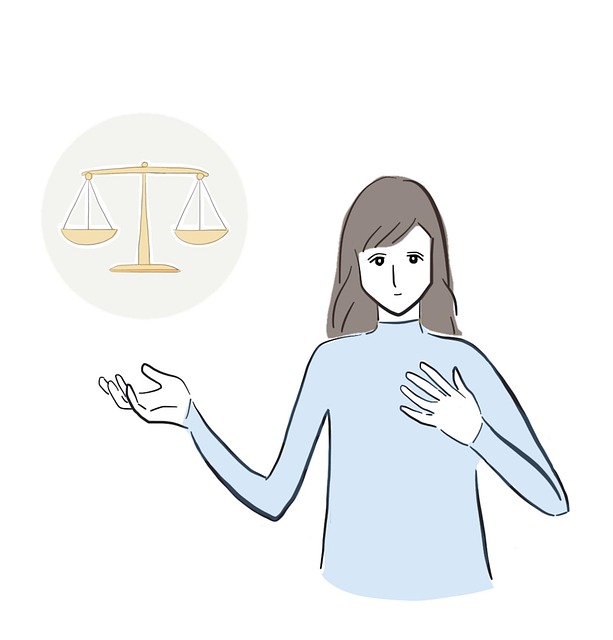Mastering Bicycle Accident Settlement Negotiations: A Comprehensive Guide

Bicycle accident settlement talks are crucial for seeking justice and reparation. Cyclists, with hel…….
In an increasingly urbanized world, cycling has emerged as a popular mode of transportation and recreational activity. However, along with its growing popularity comes the concern for cyclist safety, leading to the forefront of global discussions – bicycle accident settlement. This comprehensive article aims to dissect the multifaceted concept, exploring its historical evolution, international impact, economic implications, technological innovations, policy frameworks, challenges, and the potential for a safer cycling future. By delving into these aspects, we will equip readers with a holistic understanding of bicycle accident settlement, enabling them to appreciate its significance in creating sustainable and secure urban environments.
Definition: Bicycle accident settlement refers to the process and outcome of resolving legal and financial matters arising from bicycle-related accidents. It involves mediation, negotiation, or litigation between cyclists, drivers, insurance providers, and relevant authorities to ascertain liability, compensate victims, and ensure justice.
Core Components:
Liability Assessment: Determining the legal responsibility for the accident, which may involve analyzing factors like driver negligence, cyclist infractions, road conditions, or vehicle maintenance.
Compensation: Calculating and providing financial reimbursement or damages to cyclists injured in the accident, covering medical expenses, lost wages, pain and suffering, and property damage.
Dispute Resolution: Employing various methods such as mediation, arbitration, or court trials to resolve disagreements between parties regarding liability and compensation amounts.
Insurance Claims: Cycling-specific insurance policies play a crucial role in facilitating settlements by covering medical expenses and legal fees for cyclists and providing financial protection for drivers found liable.
Historical Context:
The concept of bicycle accident settlement has evolved alongside cycling’s changing role in society. As bicycles gained popularity in the late 19th century, early settlement practices were largely informal, relying on local customs and common law. Over time, as cycling accidents became more prevalent and severe, legal frameworks began to adapt, leading to the establishment of structured insurance systems and dispute resolution mechanisms specific to bicycle-related incidents.
Bicycle accident settlement practices vary significantly across the globe, reflecting diverse cultural, legal, and societal contexts. Here’s a snapshot of key trends:
| Region | Unique Aspects | Challenges |
|---|---|---|
| North America | Robust insurance industry with comprehensive cycling-specific policies | High cost of living and medical expenses can significantly impact settlement amounts |
| Europe | Comprehensive legal frameworks ensuring strict liability for drivers, but varying compensation standards across countries | Differing cultural attitudes towards cycling and road sharing create unique challenges |
| Asia Pacific | Rapidly growing cycling infrastructure in urban areas, but limited specialized insurance options | Increasing motor vehicle density poses risks to cyclists, with settlements often influenced by local customs |
| Latin America | Informal settlement practices prevalent, with a lack of standardized policies | Limited access to legal representation and complex liability structures hinder efficient dispute resolution |
These regional variations highlight the need for tailored strategies and international collaboration to address the unique challenges posed by bicycle accidents.
The economic implications of bicycle accident settlements are multifaceted, impacting both individuals and societal-level economies.
Market Dynamics:
Insurance Industry: Cycling-specific insurance policies contribute to overall market growth, with varying levels of coverage and premium rates depending on region and risk factors.
Legal Services: The demand for legal representation in bicycle accident cases drives the growth of specialized law firms, impacting attorney fees and access to justice.
Investment Patterns:
Infrastructure Development: Governments invest heavily in cycling infrastructure to promote safer and more efficient urban mobility, with settlement data influencing infrastructure design and safety standards.
Risk Management: Businesses and organizations, especially those operating in high-risk areas, invest in risk management strategies, including cycling safety training and equipment, to mitigate potential liabilities.
Economic Impact on Individuals:
Settlement outcomes can significantly affect cyclists’ financial well-being, with substantial medical bills and lost wages impacting their ability to cover living expenses and future healthcare costs.
Technological innovations are playing a pivotal role in enhancing bicycle accident settlement processes and improving cyclist safety:
Advanced Cycling Gear: Smart bike helmets equipped with impact sensors and connected devices that record ride data can provide invaluable evidence in accident investigations, aiding in liability determination.
Vehicle-Cyclist Communication Systems: Technologies like bike lights with automatic emergency signals and vehicle-mounted cameras facilitate better communication and coordination between cyclists and drivers, potentially reducing accidents.
Data Analytics for Risk Assessment: Advanced analytics and machine learning algorithms can analyze historical accident data to identify hotspots, predict potential risks, and inform the development of targeted safety interventions.
Real-time Traffic Monitoring: IoT sensors and drones equipped with computer vision capabilities can monitor traffic conditions in real time, providing valuable insights for road design improvements and driver behavior analysis.
The legal framework surrounding bicycle accident settlement varies widely across jurisdictions, reflecting diverse cultural perspectives and societal priorities. Common themes include:
Strict Driver Liability: Many countries enforce strict liability laws that hold drivers primarily responsible for accidents involving cyclists, ensuring swift justice and compensation for victims.
Cyclist Responsibilities: Some regions impose specific obligations on cyclists, such as adhering to traffic rules, wearing safety gear, and maintaining their bicycles in good condition, which can impact settlement outcomes.
Compensation Standards: Variations in compensation laws lead to disparities in settlement amounts, with some jurisdictions offering more comprehensive coverage for medical expenses, lost earnings, and pain and suffering.
Dispute Resolution Mechanisms: The availability and effectiveness of mediation, arbitration, and court systems influence the efficiency and cost of resolving bicycle accident disputes.
Despite its critical role, bicycle accident settlement faces several challenges that hinder its ability to provide just and efficient resolutions:
Underreporting and Lack of Data: In many regions, cycling accidents are underreported, leading to inadequate data for informed policy decisions and resource allocation.
Inconsistent Insurance Coverage: Variations in insurance policies across jurisdictions and providers can create gaps in coverage, leaving cyclists vulnerable during settlements.
Complex Liability Determinations: Accurately assessing liability in complex cases involving multiple parties and variables is challenging, often leading to prolonged disputes.
Access to Justice: Limited access to legal representation for both cyclists and drivers, particularly in low-income areas, can result in unfair outcomes and hinder dispute resolution.
Proposed Solutions:
Enhance public awareness campaigns on cycling safety and accident reporting to improve data availability.
Encourage standardized insurance policies and facilitate cross-border cooperation to ensure consistent coverage.
Develop specialized training programs for legal professionals to streamline liability assessments and dispute resolution.
Provide financial assistance or legal aid to ensure access to justice for all parties involved in bicycle accidents.
Amsterdam’s comprehensive approach to cyclist safety is evident in its robust insurance system and efficient dispute resolution processes. The city mandates that all cyclists have third-party liability insurance, covering accidents involving property damage or personal injury. In the event of a crash, cyclists can file claims with their insurers, who handle negotiations and settlements, ensuring a swift and fair process. Amsterdam’s successful model has resulted in high levels of public trust and cooperation in reporting and resolving cycling accidents.
Tokyo has implemented innovative technology to reduce bicycle accidents, particularly at intersection hotspots. The city installed smart traffic signals that prioritize cyclists’ green lights based on real-time data from sensors and cameras. This system not only improves visibility and communication between cyclists and vehicles but also provides valuable data for refining accident prevention strategies. By combining advanced technology with efficient dispute resolution mechanisms, Tokyo has achieved a significant of your time and resources to research, prepare, and execute legal settlements.
Despite its benefits, the bicycle accident settlement process faces several challenges:
Complex Liability Determinations: Accurately assessing liability in accidents involving bicycles, especially in situations with multiple parties and contributing factors, can be challenging.
High Legal Costs: The involvement of lawyers and specialized insurance claims processes can result in elevated costs, potentially limiting access to justice for some individuals.
Lack of Standardization: Diverse legal frameworks and cultural attitudes across regions create inconsistencies in settlement practices, making it difficult to achieve a uniform approach.
To address these issues, several strategies can be implemented:
Standardized Protocols: Developing and adopting standardized protocols for accident investigation, liability assessment, and dispute resolution can ensure consistency and fairness across jurisdictions.
Legal Aid and Education: Providing legal aid and education programs to cyclists and drivers can enhance their understanding of rights and responsibilities, potentially reducing the need for lengthy legal processes.
Technology Integration: Utilizing technology, such as blockchain for secure data sharing or AI for predictive analytics, can streamline settlement processes, reduce costs, and improve efficiency.
Case Study 1: Amsterdam’s Cycling City Initiative
Amsterdam, Netherlands, is renowned for its cycling-friendly infrastructure and culture. The city has implemented a comprehensive insurance system where all cyclists are automatically covered for accidents. This initiative ensures swift settlements and encourages cyclists to report incidents without fear of financial burden, leading to improved road safety and higher claim satisfaction rates.
Case Study 2: The Role of Technology in Germany
Germany has successfully utilized technology to enhance bicycle accident settlement processes. The country’s mandatory insurance system for cyclists includes a digital platform where riders can quickly report accidents, access medical records, and track claims status. This streamlined approach reduces administrative costs and speeds up compensation, fostering a positive relationship between cyclists and insurance providers.
Case Study 3: Community-Based Approaches in Denmark
Copenhagen, Denmark, has pioneered community-based solutions to bicycle accident issues. The city’s extensive network of cycling paths and safety measures, coupled with neighborhood watch programs, encourages safe cycling while reducing accidents. Local community centers also offer educational programs to promote road sharing etiquette between cyclists, drivers, and pedestrians.
The future of bicycle accident settlement is poised for significant growth and transformation, driven by several emerging trends:
Sustainable Mobility: The global shift towards sustainable and eco-friendly transportation will further emphasize cycling as a viable mode of travel, leading to increased demand for efficient and fair settlement processes.
Advanced Safety Technologies: Continued technological advancements in cycling gear, vehicle automation, and data analytics will play a pivotal role in accident prevention and improved dispute resolution.
Telematics and Insurance: The integration of telematics data into insurance policies can provide real-time risk assessments, enabling dynamic pricing and personalized coverage options for cyclists.
Global Collaboration: As cycling becomes more widespread globally, there is an increasing need for international cooperation to establish uniform standards and best practices for bicycle accident settlements.
Bicycle accident settlement is a complex yet vital aspect of fostering a culture of safe and sustainable urban mobility. As cycling continues to gain popularity worldwide, effective and fair dispute resolution mechanisms are essential to encourage responsible road sharing. By learning from successful case studies, adapting best practices, and embracing technological advancements, societies can enhance the efficiency and accessibility of bicycle accident settlements, ultimately contributing to safer and more inclusive urban environments.
Q: What is the role of insurance in bicycle accident settlements?
A: Insurance plays a critical role by providing financial protection for cyclists and drivers involved in accidents. It helps cover medical expenses, legal fees, and potential compensation claims, ensuring that individuals are not burdened with excessive costs during the settlement process.
Q: How do I know if I have a valid claim for a bicycle accident?
A: Valid claims typically involve determining liability, which requires evidence of negligence or infractions by another party. This may include witness statements, police reports, medical records, and photographic evidence of the incident. Consulting with a legal professional can help assess the strength of your case.
Q: Are there any special considerations for children involved in bicycle accidents?
A: Yes, special considerations are often given to children due to their age and potential lack of understanding of traffic rules. Settlements may take into account their unique needs, such as long-term medical care or specialized rehabilitation, ensuring they receive appropriate support and compensation.
Q: Can I represent myself in a bicycle accident settlement case?
A: While it is possible to represent yourself, complex legal proceedings often benefit from the expertise of a qualified attorney specializing in cycling-related accidents. Legal professionals can navigate technicalities, negotiate with insurance companies, and ensure your rights are protected throughout the settlement process.
Q: How do I find the right legal representation for my bicycle accident case?
A: Researching local attorneys with experience in cycling-related cases is a good starting point. Online reviews, recommendations from cycling communities or support groups, and consultations with potential lawyers can help you find an advocate who understands the nuances of these types of settlements.

Bicycle accident settlement talks are crucial for seeking justice and reparation. Cyclists, with hel…….

Bicycle accident victims often underestimate their claim value due to initial seemingly minor injuri…….

Determining liability is a crucial step in resolving a bicycle accident and reaching a settlement. A…….

After a bike accident, understanding your legal rights is key. A specialist attorney guides you thro…….

Bicycle accident settlements are a swift and cost-efficient alternative to court for resolving legal…….

After a bicycle accident, understanding your legal rights is crucial for securing a fair bicycle acc…….

After a bicycle accident, understanding your legal rights and taking immediate steps ensures a smoot…….

In bicycle accident settlements, auto drivers are usually held liable for cyclist harm due to neglig…….

In bicycle accident settlements, establishing liability is key, with drivers usually held accountabl…….